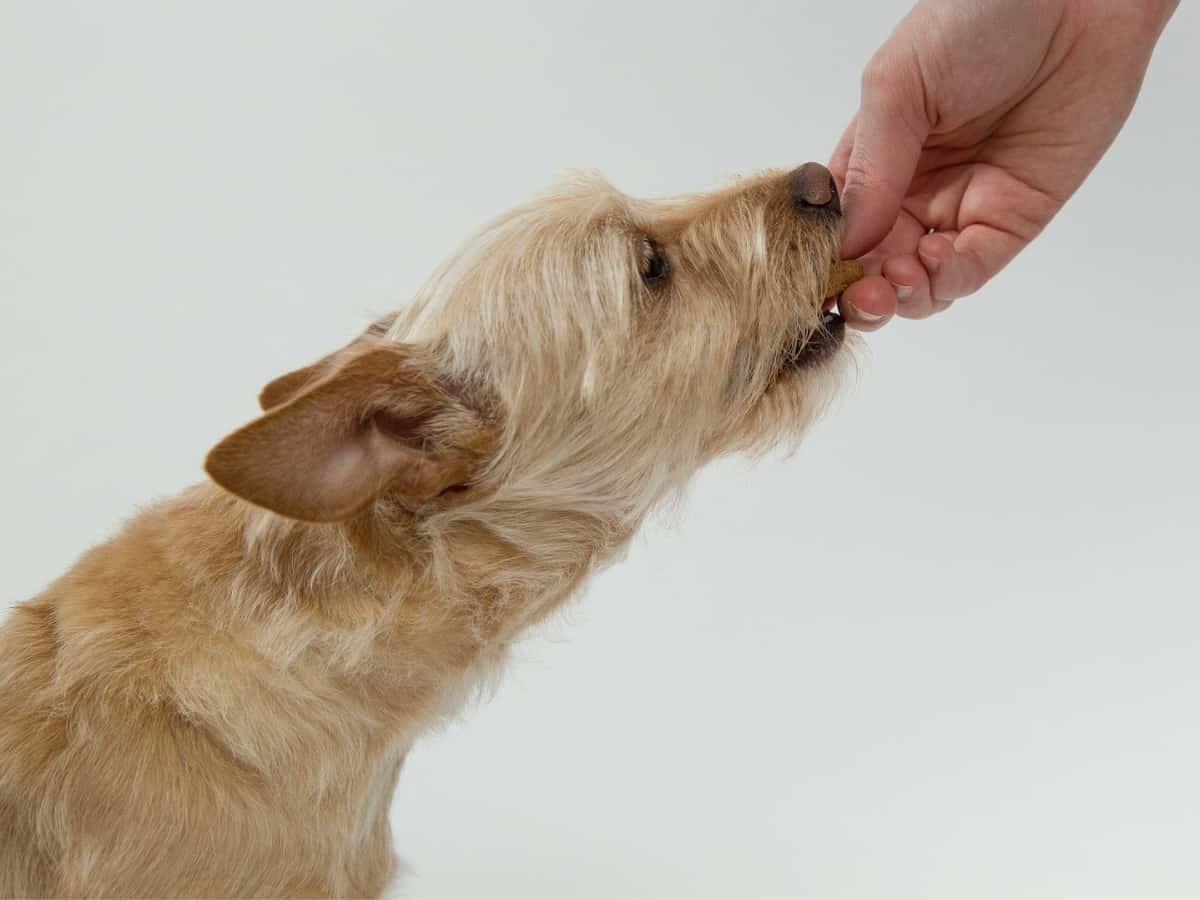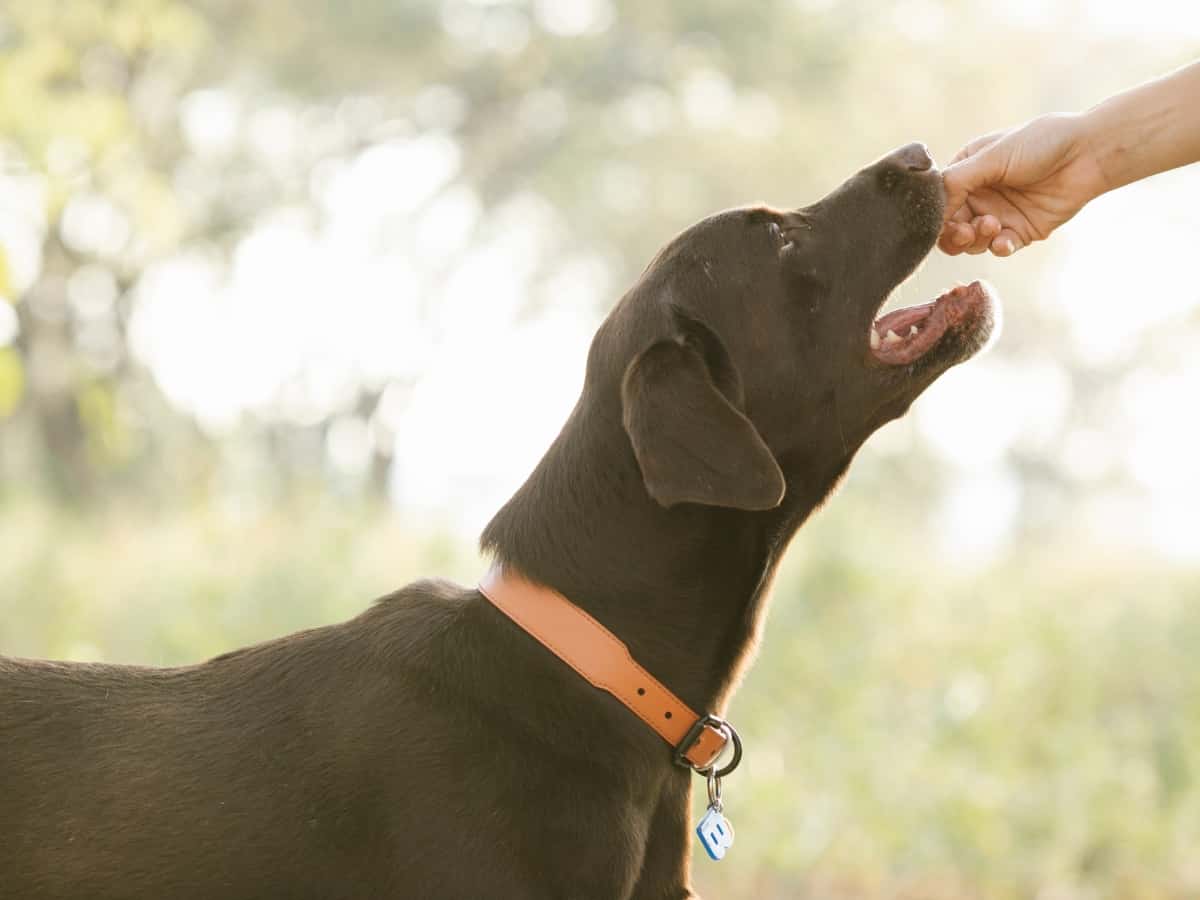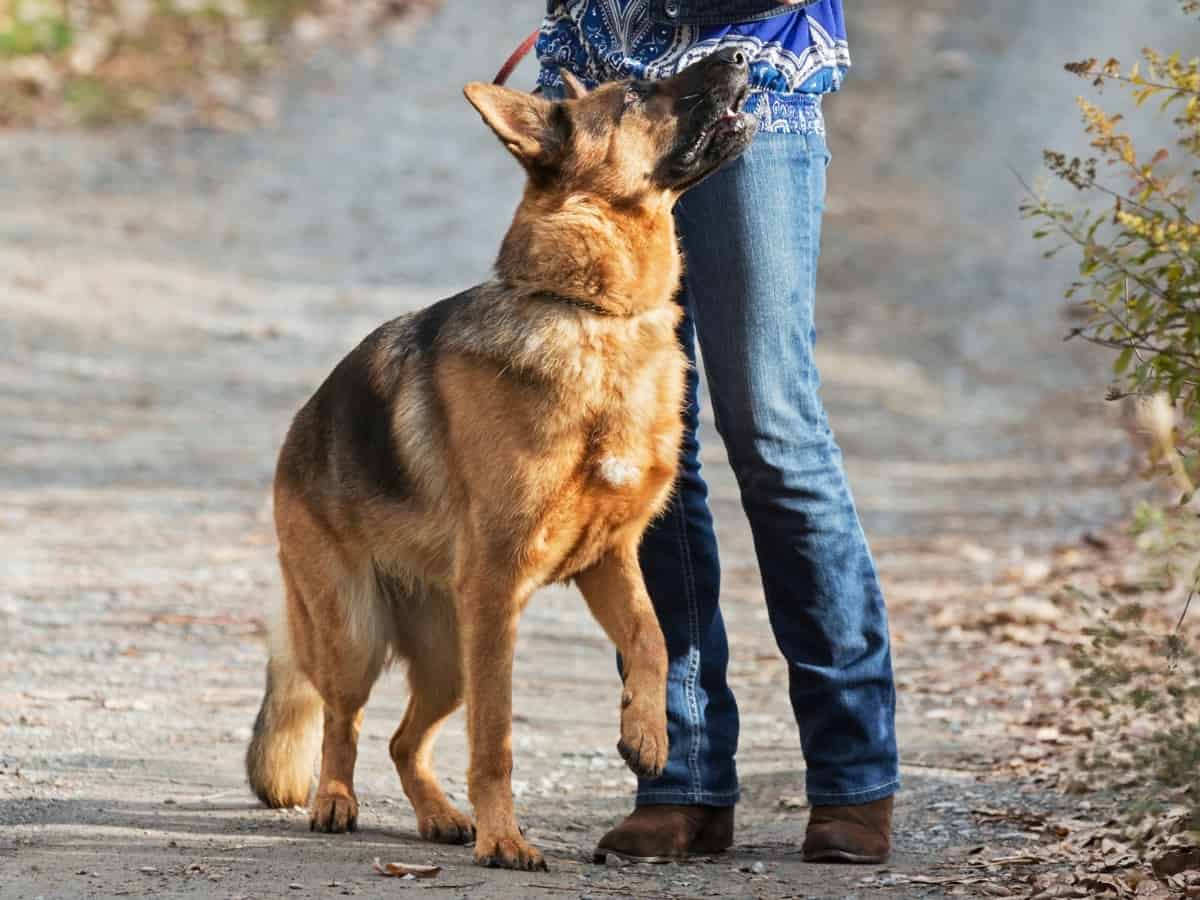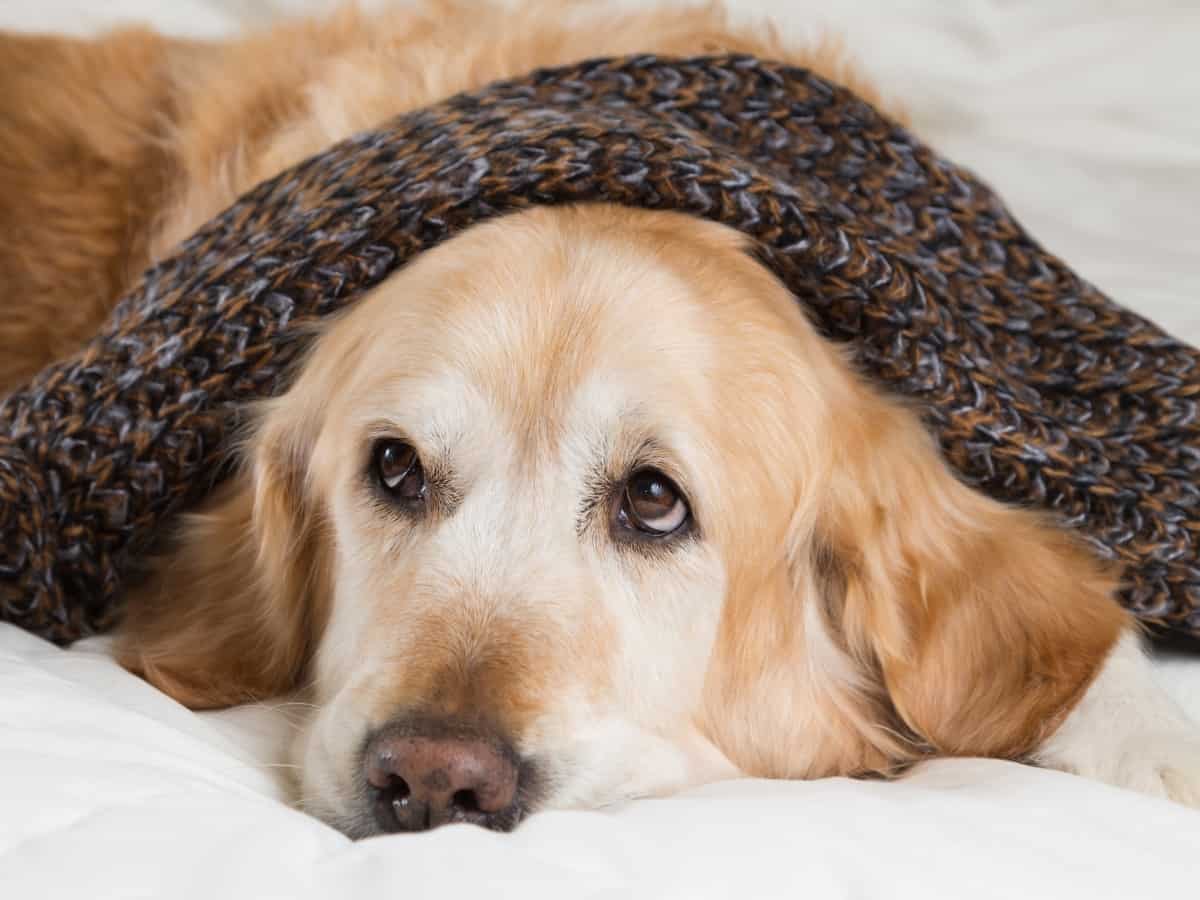You want your furry friend to be healthy and happy as a dog owner. It can be concerning when your dog refuses to eat unless you hand-feed him. Understanding why your dog is exhibiting this behavior is important so you can address the root cause and help your dog get back on track.
Your dog may only eat when hand-fed due to anxiety, boredom, picky eating habits, changes in routine or environment, aging, medical issues, training or conditioning, socialization issues, or other factors.
There are a variety of reasons why your dog may only eat when hand-fed. By identifying the underlying cause, you can take the necessary steps to address the issue and help your dog feel more comfortable eating on their own.
In this article, we will explore, in detail, some of the most common reasons why dogs refuse to eat unless they are hand fed and offer tips on encouraging your dog to eat independently.

Why Won’t My Dog Eat Unless I Hand Feed Him?
As the owner of a German Shepherd who has had periods of wanting to be hand fed, I know how time-consuming and annoying this can be. After all, feeding a 90 lbs German Shepherd is no quick feat! Let’s dive into why your dog may exhibit this strange eating behavior.
Watch This Dog Who Will Only Eat If Hand Fed…
Food Aversion
As a dog owner, I know how frustrating it can be when my furry friend refuses to eat her dry food.
One possible reason for this behavior is food aversion. This happens when a dog has had a bad experience with a certain type of food, causing them to develop a dislike or aversion to it.
This can make it difficult for them to eat that food, even if it’s nutritionally balanced and healthy.
However, there is a way to help your dog overcome their food aversion and start eating again. Hand-feeding can make the food more appealing and encourage the dog to eat.
By offering small portions of the disliked food directly to your dog, you can help them overcome their aversion and start eating independently.
It may take some patience and persistence, but with time, your dog may become more willing to eat the food it once avoided.
Socialization Issues
Socialization is essential to a dog’s development.
Dogs not properly socialized as puppies may struggle to feel comfortable eating around other dogs or in specific environments. This can lead to a loss of appetite and a reluctance to eat independently.
Hand-feeding can be a helpful solution to this problem. Offering your dog small portions of food directly from your hand can help reduce their anxiety and make eating more comfortable.
This can help your dog feel more relaxed and at ease when eating, which may encourage them to eat more independently.
It’s important to remember that socialization takes time and patience. Still, your dog can overcome their socialization issues with consistent effort and become more comfortable eating in various situations.

Inactivity
Dogs needing more exercise or mental stimulation may become bored or stagnant, leading to a loss of appetite.
When a dog is not burning off enough energy or engaging their brain enough, it may not feel hungry or motivated to eat its food.
Hand-feeding can be a helpful way to combat inactivity-related loss of appetite. By offering small portions of food directly to your dog, you can provide a source of stimulation and encourage them to eat.
This can help your dog feel more engaged and motivated to eat, even if they’re not feeling particularly hungry.
It’s important to remember that regular exercise and mental stimulation are essential for a dog’s health and well-being.
So if your dog consistently refuses to eat, it may be time to reevaluate their activity level and find ways to keep them more active and engaged.
A Strong Bond With The Owner
I’ve noticed that my furry friend prefers eating when I offer her food directly from my hand. This behavior is often seen in dogs that have a strong bond with their owner, such as the German Shepherd, Labrador, or Beagle.
“My German Shepherd loves to be near me and follows me room-to-room, such are her protective instincts and emotional connection.”
When a dog feels a strong connection to their owner, it may prefer to eat when given food directly by its owner. This is because it provides a sense of security and reinforces their bond.
Hand-feeding can be a great way to strengthen your bond with your dog. By offering small portions of food directly to your dog, you can create positive associations between you and the act of eating.
This can help deepen your bond and make your dog feel more comfortable and secure around you.
It’s important to remember that building a strong bond with your dog takes time and effort, but with patience and consistency, you can create a special connection that lasts a lifetime.

Training or Conditioning
I’ve encountered some dogs that seem trained or conditioned to only eat when hand-fed.
This behavior can result from previous training or conditioning, where the dog was ONLY given food when hand-fed.
Over time, the dog may have learned to associate eating with hand-feeding, making it difficult for them to eat on their own.
If your dog has been trained or conditioned to only eat when hand-fed, breaking this habit may take time and patience.
One way to encourage your dog to eat on its own is to gradually reduce the amount of hand-feeding and increase the amount of self-feeding.
You can start by offering small portions of food from a bowl while offering a few pieces directly from your hand.
Over time, you can gradually reduce the amount of hand-feeding until your dog eats independently.
Remember, patience and consistency are key when breaking a habit, and it’s important to reward your dog when they show progress in eating on its own.
Picky Eating Habits
You know the type – the ones that turn their nose up at anything that isn’t their favorite flavor or brand.
It can be frustrating, but hand-feeding can be a great way to get them to eat. It’s like a personal chef service – who wouldn’t want that?
Think about it – when you’re at a fancy restaurant, and the chef personally brings out your meal, doesn’t it seem more appetizing?
Well, the same goes for our doggos. Hand-feeding can make the food seem more appealing and encourage them to eat, even if it’s something they would usually turn their nose up at.
Plus, you get the bonus of feeling like a gourmet chef for your dog. Win-win!
Changes in Environment
Like humans, dogs can get thrown off their game when they’re in a new environment, which can lead to a loss of appetite. But fear not because hand-feeding is here to save the day!
Consider it this way – when you’re feeling stressed or anxious, isn’t it comforting to have someone close to you to help you feel more at ease? Well, the same goes for our dogs.
Hand-feeding can help provide that comfort and stability during times of change, making it easier for them to adjust to their new surroundings.
And who knows, maybe they’ll even start associating hand-feeding with their happy place, like a little vacation from their everyday routine.

Separation Anxiety
Ah, separation anxiety. As a dog owner, I know all too well the guilt of leaving your pup at home.
But sometimes, it’s unavoidable – we’ve got places to go, people to see, and unfortunately, dogs can’t come with us everywhere.
When dogs with separation anxiety refuse to eat, hand-feeding can be a game-changer.
Think of it like this – when you’re feeling lonely or sad, isn’t it comforting to have a friend or loved one to share a meal with?
Well, the same goes for our dogs. Hand-feeding can help reduce their anxiety and make eating more enjoyable.
Plus, it’s a great way to bond with your dog and show them you’re there for them, even when you’re not physically there.
So, the next time you leave your pup at home, try hand-feeding them and see if it makes a difference. Who knows, maybe they’ll even start looking forward to mealtime!
FAQs
Why Does My Dog Want To Be Hand Fed?
Your dog may want to be hand fed for various reasons, including food aversion, socialization issues, inactivity, a strong bond with their owner, picky eating habits, changes in the environment, or separation anxiety.
Hand-feeding can provide comfort and encouragement, but addressing the underlying cause is key to helping your dog eat independently.
Not all dogs are the same, though. Some dogs are the complete opposite and will refuse to eat from your hand.
How Do I Get My Dog To Eat From His Bowl?
Begin by ensuring the bowl is new, thoroughly cleaned, and free from any food leftovers. Then, experiment by moving the bowl to a different location, as your dog may avoid the usual feeding spot.
An alternative bowl type, such as a ceramic or shallow bowl, may also be helpful, as some dogs prefer these to metal ones. To ease your dog into eating from the bowl, try placing a few treats or kibble in it and let them eat without interruptions or pressure.
Related Posts You May Like:





